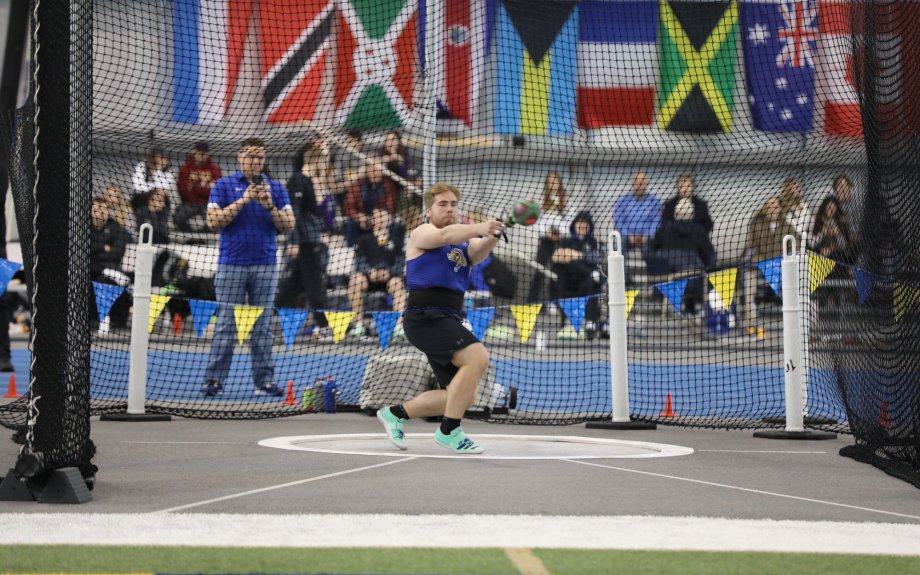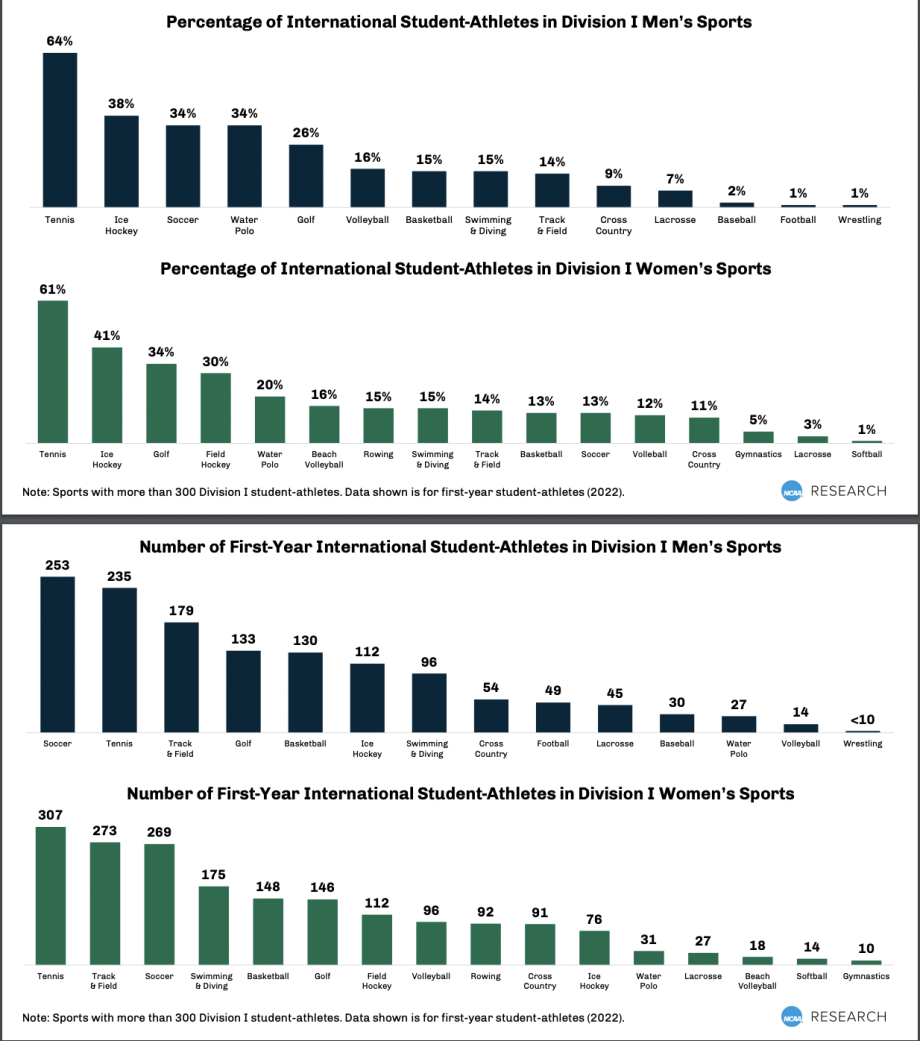
A new study from South Dakota State University's College of Education and Human Sciences analyzed what factors influenced Division I international student-athletes in their college choice.
Student-athletes who participate in intercollegiate athletics come from nearly every corner of the globe. At the Division I level, this is even more pronounced. In 2022, according to the National Collegiate Athletics Association, 3,137 international student-athletes were participating in Division I sports, making up approximately 13% of all student-athletes at the NCAA's highest level.

At South Dakota State University, for example, there are 20 international student-athletes, hailing from places like Australia, Taiwan, Zambia, Canada and many other countries. What factors influenced these student-athletes in their college choice?
This is the basis for the research of Bryan Romsa, associate professor of sport and recreation management at SDSU, and Katelyn Romsa, associate professor of counseling and human development at SDSU. In a new study, titled "Analysis of Factors Influencing the College Choice Decisions of NCAA Division I International Student-Athletes," they analyzed what factors led to the college decisions of international student-athletes at Division I universities.

"To gain a holistic understanding of international students' college choice, we examined the literature on reasons why international student-athletes choose to come to the U.S., their experiences and adjustment to their new environment," Katelyn said. "Understanding factors that influence these student-athletes’ school choice is important, and athletics can be a tool in attracting and retaining international students."
Factors in college choice
The researchers interviewed eight student-athletes — two male and six female — from a mid-major Division I, land-grant university in the Midwest. The student-athletes participated in the two sports — golf and swimming — with the highest representation of international student-athletes at that particular university. The students hailed from Venezuela, Spain, Ireland, Mexico, the Netherlands, Brazil and South Africa.
"We conducted one-on-one interviews with these student-athletes and found two major themes: the role of the institution and the role of athletics," Bryan said. “The themes were categorized into external and internal factors.”
The relationship built with the head coach during the recruiting process had a major influence on the college choice of the international student-athletes. American high schoolers will often take “unofficial” or “official” visits to various universities during their recruiting process. Prospective international student-athletes, due to their location, are often not afforded this luxury. This makes the relationship with the head coach even more important.
“Their school choice depended on how much they felt that could relate to and trust the coach as well as the clarity of the information received from the coach,” Bryan said. “Coaches taking the time to build relationships with international student-athletes they are recruiting and providing information to them from a distance will be paramount to their recruitment.”
Familiarity with other student-athletes from the same country who had chosen to go to school in the U.S. also played a factor in a prospective international student-athlete’s decision-making.
“This knowledge influenced students’ decision to play in the U.S. but not necessarily to come to a particular institution,” Katelyn said.
Unlike previous findings, recommendations from other international athletes did not play as a big of role in school choice, Katelyn noted. Rather, the information obtained from them either helped solidify their interests in a university and/or was a cautionary tale on what to pay attention to when evaluating schools.

The researchers also learned that information available on the internet played a vital role in college choice for international student-athletes. For example, prospective international student-athletes don't have the opportunity to tour athletic and academic facilities, so they rely on pictures and information provided on the school's website.
Students from countries culturally or geographically different from the U.S. found challenges with the U.S.'s athletic system and academic grading scales. Some also found the weather to be worse than imagined, and others had difficulties with the language. One of the insights from the interviews noted that international student-athletes should integrate with their American teammates, but this can sometimes be difficult because of the feeling that they are "different."
The availability of scholarships and the ability to pursue both academics and athletics were a major "pull" factor for international student-athletes. The U.S. is unique as one of few countries to offer a combination of academic opportunities, athletic opportunities and monetary scholarships. However, money was not cited as a main reason why student-athletes chose to come to the U.S.
"The overarching theme identified in this study is that international student-athletes' choice of school is motivated by a desire to have a great experience, feel a sense of belonging with the team, connect with the head coach and coaches, and succeed both academically and athletically," Bryan said.
Contributing authors included Jon Lim, associate professor of sport management at Minnesota State University, Mankato, and Agatha Ampaire, SDSU's former career education coordinator.
The full study was published in the academic journal The Sport Journal and can be found here.
- Contact:
- Telephone number: 605-688-6161
Republishing
You may republish SDSU News Center articles for free, online or in print. Questions? Contact us at sdsu.news@sdstate.edu or 605-688-6161.

